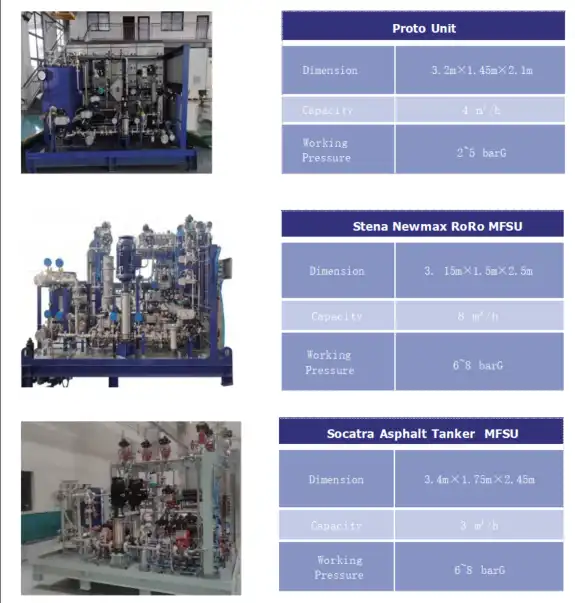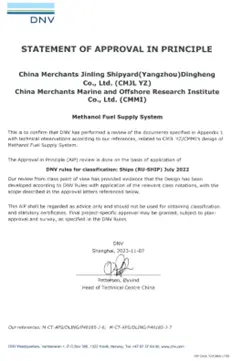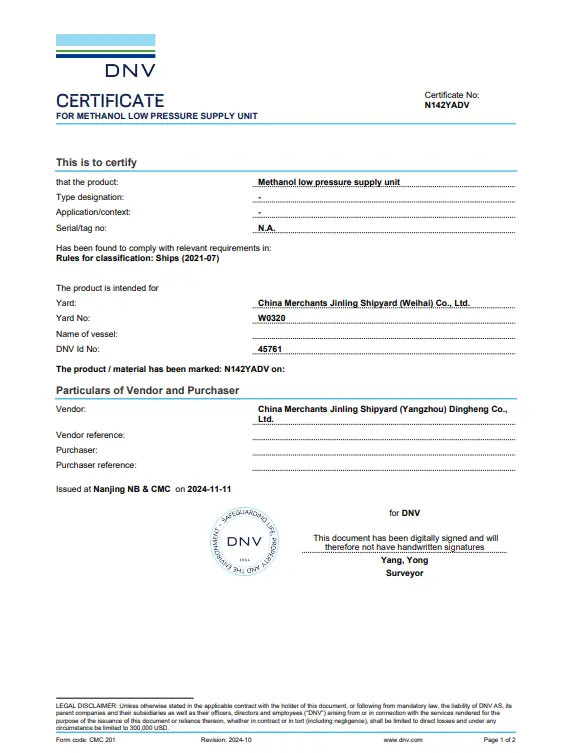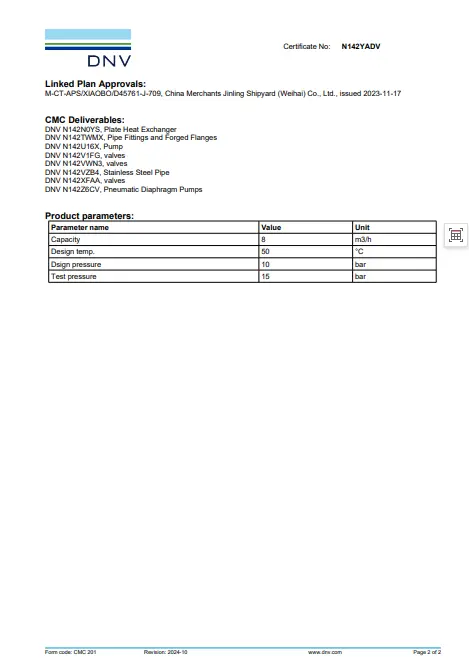Methanol Fuel Injection Setup
Overview of the Methanol Fuel Injection Setup (MFSS)
The Methanol Fuel Injection Setup (MFSS) comprises several essential subsystems, including the primary supply unit, filling and transfer module, auxiliary support systems, and safety and control mechanisms. We have the capacity to either design and manufacture MFSS units independently or offer fully customized solutions tailored to meet specific client requirements.

WHY CHOOSE US?
1. In-Depth Industry Knowledge – Our team boasts extensive expertise in the design and construction of dual-fuel vessels, chemical tankers, liquefied gas carriers, and related engineering systems.
2. Comprehensive End-to-End Solutions – We provide a diverse range of solutions, including Methanol Fuel Injection Setup (MFSS), LNG Fuel Supply Systems (FGSS), Ammonia Fuel Supply Systems (AFSS), and LPG Cargo Handling Systems (CHS).
3. Demonstrated Experience – We have successfully implemented 19 clean fuel supply and cargo handling systems, which include two MFSS skids for Stena RoRo, consistently achieving high quality and performance standards.
4. Innovative Leadership – As a pioneering developer of methanol fuel supply units in the domestic market, we commenced our research, development, and sales initiatives as early as late 2022.
5. Holistic Lifecycle Support – Our services cover the entire lifecycle, from system design and manufacturing to installation and multi-unit construction, complemented by robust after-sales support.
Product Specifications

Product Overview
1. METHANOL SUPPLY UNIT – This component guarantees that methanol parameters—such as pressure, temperature, flow rate, and purity—continuously align with specifications set by engine manufacturers. It maintains stable pressure and flow irrespective of engine load and ensures reliability during startup, shutdown, or transitional phases.
2. FILLING & DELIVERY SYSTEM – Developed strictly in accordance with SOLAS-IBC Code standards for chemical tankers, this system ensures safe management of methanol throughout bunkering, storage, and transfer processes, taking into account its low flashpoint, toxicity, and corrosive nature.
3. MODULAR STRUCTURE FOR FLEXIBILITY – The modular design facilitates flexible installation and adaptation to the vessel's configuration. It can function as a standalone unit or integrate into a comprehensive system.
4. ADHERENCE TO SAFETY STANDARDS – Constructed to comply with both SOLAS-IBC chemical safety requirements and IGF Code standards for low flashpoint fuels, the system guarantees safe and compliant operation at all times.
5. CUSTOMIZED SOLUTIONS FOR SHIPOWNERS – We offer tailored solutions for both new builds and retrofitting projects, ensuring reliability and adaptability to operational needs.
QUALITY ASSURANCE
DNV AIP Certificate



Installation Process
1. Thoroughly review the vessel’s design documentation and interface specifications, addressing any unresolved technical issues prior to installation.
2. Assemble all necessary tools and equipment for installation while ensuring compliance with safety protocols before commencing work.
3. Transport the prefabricated methanol fuel supply module to the installation site, positioning it using suitable lifting equipment.
4. Secure the module's base to the vessel structure, verifying correct alignment and compliance with flatness and stability standards outlined in the design.
5. Connect the methanol piping, auxiliary pipelines, and control cables, confirming seal integrity and validating all electrical connections.
6. Perform subsystem-level and integrated system tests to ensure that bunkering, supply, and safety control functions operate correctly.
For more product information about Methanol Fuel Injection Setup, please leave a message below.

